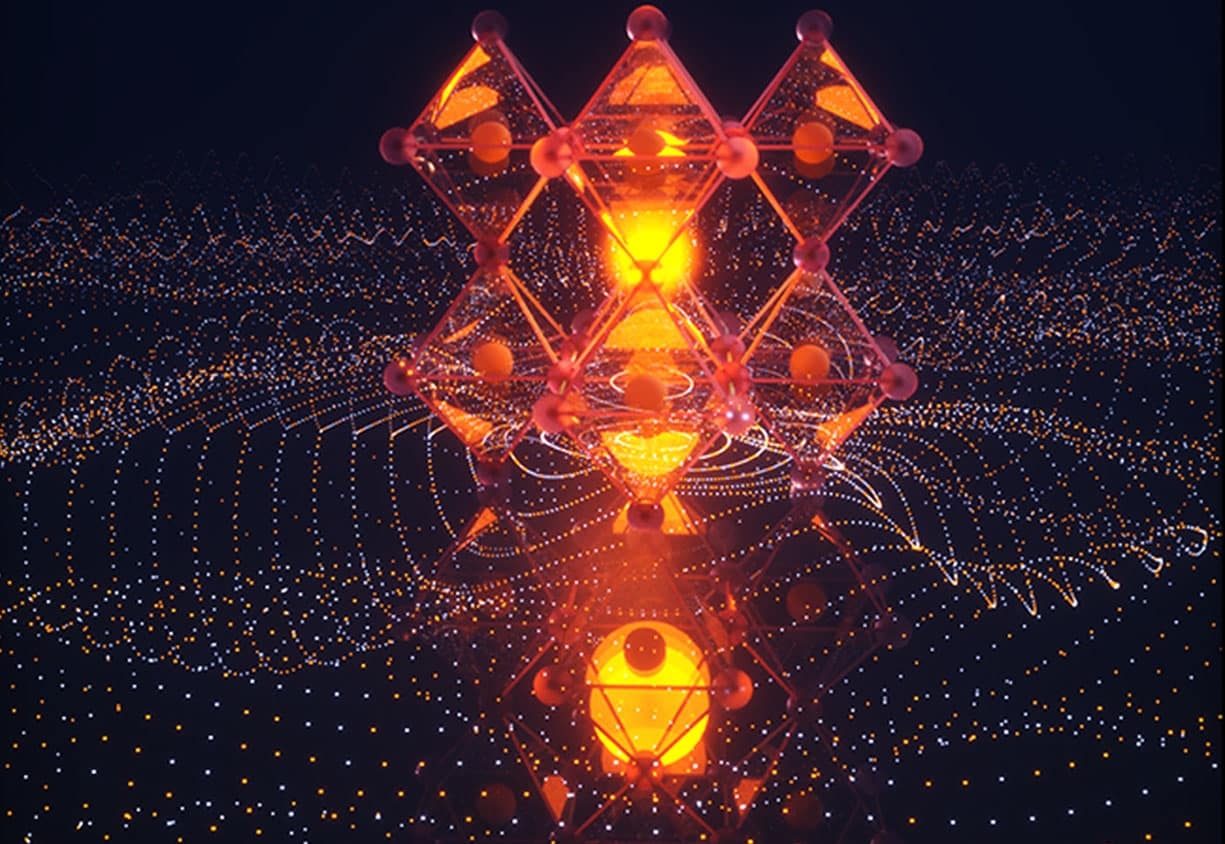For Immediate Release
An international group of researchers has created a mixed magnon state in an organic hybrid perovskite material by utilizing the Dzyaloshinskii–Moriya-Interaction (DMI). The resulting material has potential for processing and storing quantum computing information. The work also expands the number of potential materials that can be used to create hybrid magnonic systems.
In magnetic materials, quasi-particles called magnons direct the electron spin within the material. There are two types of magnons – optical and acoustic – which refer to the direction of their spin.
“Both optical and acoustic magnons propagate spin waves in antiferromagnets,” says Dali Sun, associate professor of physics and member of the Organic and Carbon Electronics Lab (ORaCEL) at North Carolina State University. “But in order to use spin waves to process quantum information, you need a mixed spin wave state.”
“Normally two magnon modes cannot generate a mixed spin state due to their different symmetries,” Sun says. “But by harnessing the DMI we discovered a hybrid perovskite with a mixed magnon state.” Sun is also a corresponding author of the research.
The researchers accomplished this by adding an organic cation to the material, which created a particular interaction called the DMI. In short, the DMI breaks the symmetry of the material, allowing the spins to mix.
The team utilized a copper based magnetic hybrid organic-inorganic perovskite, which has a unique octahedral structure. These octahedrons can tilt and deform in different ways. Adding an organic cation to the material breaks the symmetry, creating angles within the material that allow the different magnon modes to couple and the spins to mix.
“Beyond the quantum implications, this is the first time we’ve observed broken symmetry in a hybrid organic-inorganic perovskite,” says Andrew Comstock, NC State graduate research assistant and first author of the research.
“We found that the DMI allows magnon coupling in copper-based hybrid perovskite materials with the correct symmetry requirements,” Comstock says. “Adding different cations creates different effects. This work really opens up ways to create magnon coupling from a lot of different materials – and studying the dynamic effects of this material can teach us new physics as well.”
The work appears in Nature Communications and was primarily supported by the U.S. Department of Energy’s Center for Hybrid Organic Inorganic Semiconductors for Energy (CHOISE). Chung-Tao Chou of the Massachusetts Institute of Technology is co-first author of the work. Luqiao Liu of MIT, and Matthew Beard and Haipeng Lu of the National Renewable Energy Laboratory are co-corresponding authors of the research.
-peake-
Note to editors: An abstract follows.
“Hybrid Magnonics in Hybrid Perovskite Antiferromagnets“
DOI: 10.1038/s41467-023-37505-w
Authors: Andrew Comstock, Tonghui Wang, Aram Amassian, Dali Sun, North Carolina State University; Chung-Tao Chou, Luqiao Liu, Massachusetts Institute of Technology; Zhiyu Wang, Hong Kong University of Science and Technology; Ruyi Song, Duke University; Joseph
Sklenar, Wayne State University; Wei Zhang, University of North Carolina at Chapel Hill; Haipeng Lu, Matthew Beard, National Renewable Energy Laboratory
Published: April 1, 2023 in Nature Communications
Abstract:
Hybrid magnonic systems are a newcomer for pursuing coherent information processing owing to their rich quantum engineering functionalities. One prototypical example is hybrid magnonics in antiferromagnets with an easy-plane anisotropy that resembles a quantum-mechanically mixed two-level spin system through the coupling of acoustic and optical magnons. Generally, the coupling between these orthogonal modes is forbidden due to their opposite parity. Here we show that the Dzyaloshinskii–Moriya-Interaction (DMI), a chiral antisymmetric interaction that occurs in magnetic systems with low symmetry, can lift this restriction. We report that layered hybrid perovskite antiferromagnets with an interlayer DMI can lead to a strong intrinsic magnon magnon coupling strength up to 0.24 GHz, which is four times greater than the dissipation rates of the acoustic/optical modes. Our work shows that the DMI in these hybrid antiferromagnets holds promise for leveraging magnon-magnon coupling by harnessing symmetry breaking in a highly tunable, solution-processable layered magnetic platform.
This post was originally published in NC State News.
- Categories:



